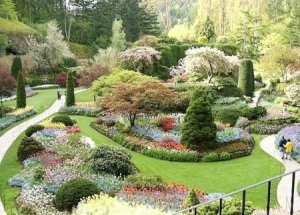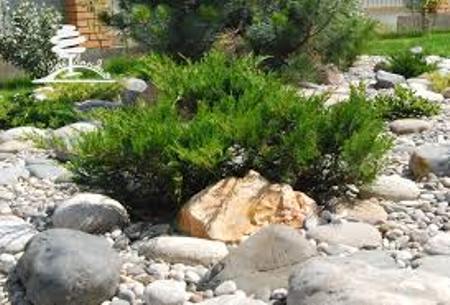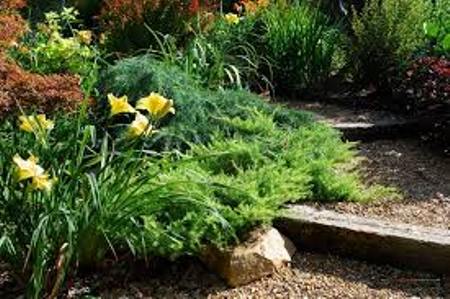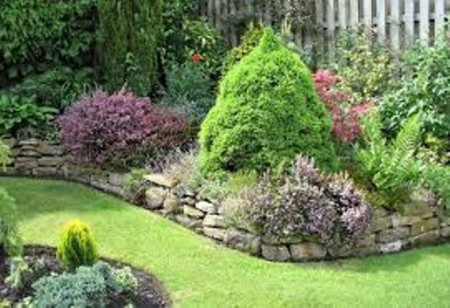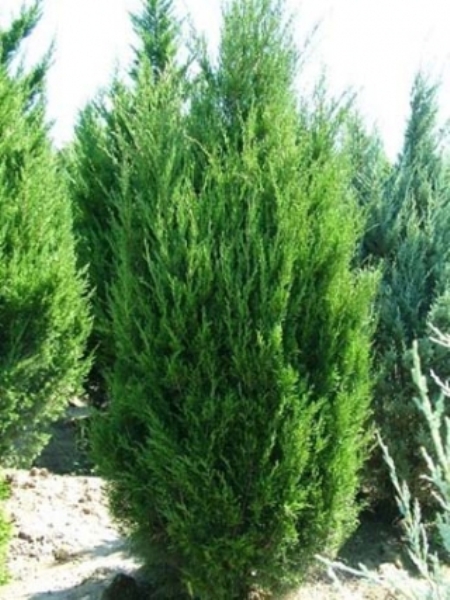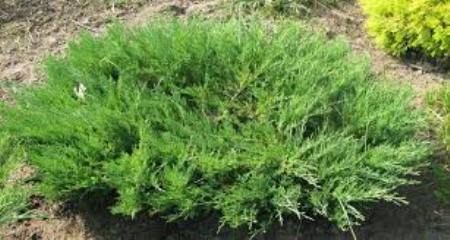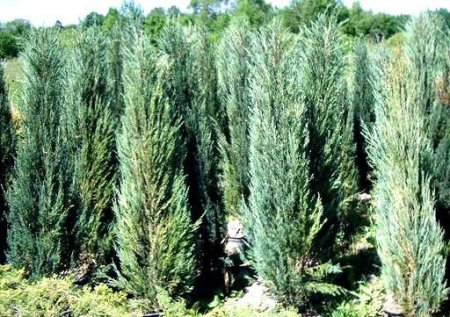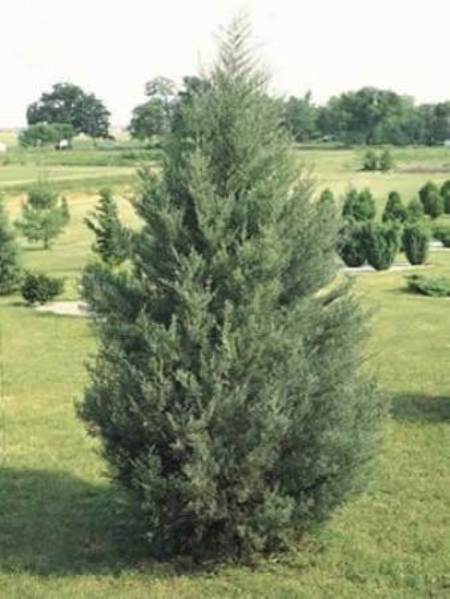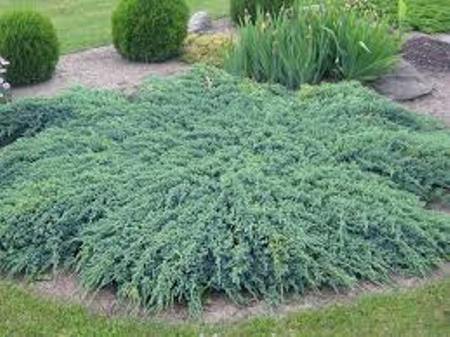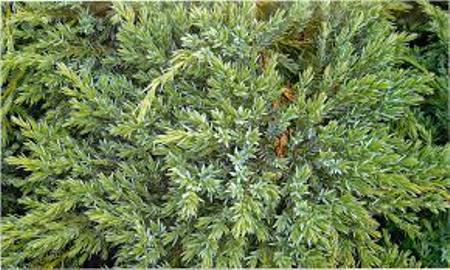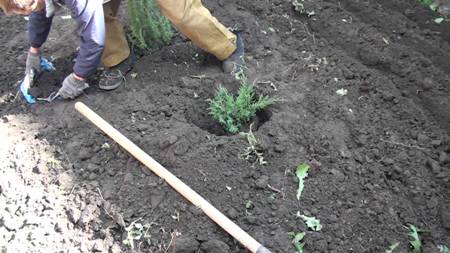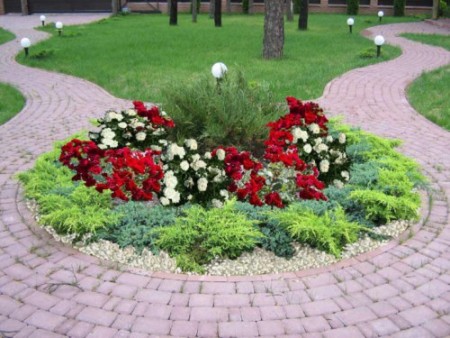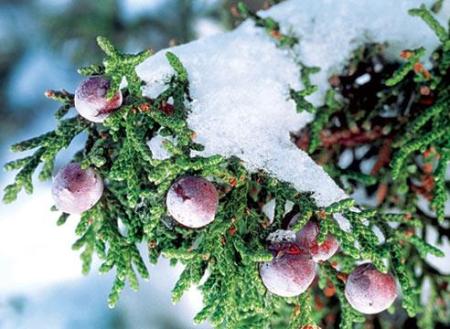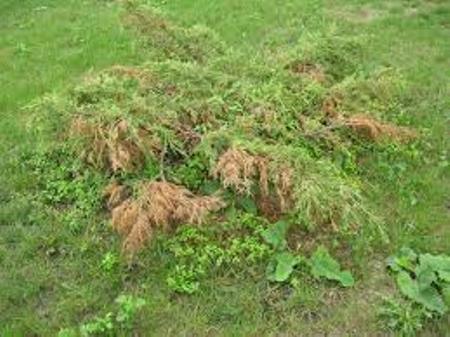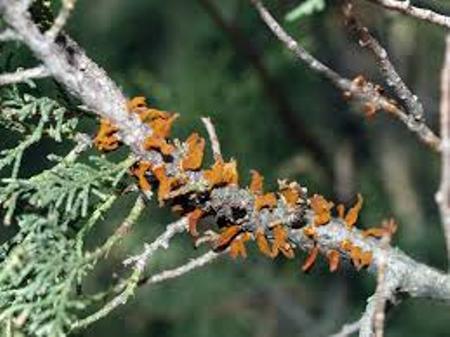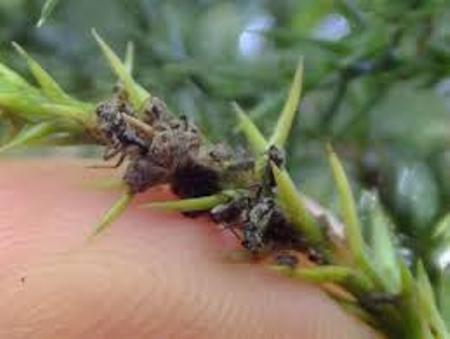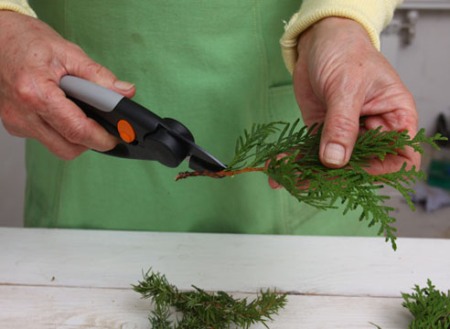A man who finds himself in a juniper grove has the most pleasant sensations - from the amazing aroma of a cypress evergreen shrub, he gets a lot of positive emotions. To the joy of gardeners, this kind of plant can be not only wild - domestic gardening practices the successful cultivation of junipers in the middle band. Plants of the cypress family are famous for their originality and decorative appearance, but their cultivation requires special attention and careful care.
Content
Juniper in the garden on the plot
The elegance and power of junipers have attracted the attention of both experienced gardeners and amateurs for several decades. It is interesting not only for its picturesqueness and splendor, but also for its aromatic medicinal properties, which can help in the treatment of many diseases. Planting juniper seedlings on the territory of the infield, the owners will not only have a unique garden design, but also a rich in aroma, clean air.
Juniper is considered to be one of the most common species of coniferous trees, which is most often used for decorating garden design. Virtually in all varieties of landscape design - flowerbeds, rock gardens and so on, juniper occupies the main position.
Juniper, as well as other coniferous ornamental plants, can be purchased at a specialized gardening store. Usually, young plants for sale are provided in plastic containers.
Juniper, plant varieties, which one to choose for planting
This representative of the flora is famous for its variety of varieties. The difference between varieties is primarily determined by the size: representatives of one species of juniper can reach a height of 15 meters, representatives of others - be a bush that belongs to the family of creepers. Quite often, the design of the garden involves the planting of different types of juniper.
The most valuable varieties are:
Juniperus vulgaris, the most famous variety in the middle band, has its own subspecies:
- Hibernica is a tall tree in the form of a column, when using it in the arrangement of garden design it is necessary to take into account its maximum height, which, with proper care, can reach 3.5-4 m.
- Compressa is similar to the previous one, but with a much smaller height reaching 1 meter.
- Green Carpet is a representative of a creeping variety, used mainly to create a hedge or to create a lawn design.
Ideal place for juniper landing - along the paths located on the backyard, stairs or other places intended for passage. The most important thing is to plant a juniper on the site, not forgetting the need for timely care of the plant and its pruning.
Chinese juniper. Another pretty bright view of the coniferous. The maximum height of some varieties is about 20 m. Usually, plants have a spreading crown. Depending on the subspecies, their needles are light green, blue or golden yellow. It looks good both in the group landing, and in solitary. Those who decide to plant Chinese varieties need to be aware that their growth is much slower than that of other species. The valuable subspecies of the Chinese juniper are:
- Gold coast - a bright representative of the species, refers to flat bushes, has a golden green color.
- Plumosa is an ornamental, dwarf species representative, mainly used for decorating the entrance and lawns.
- Blue Alps is a tall variety with blue needles and is famous for its special aromatic properties.
- Old Gold - a bush, branches wide, have bronze color.
Juniperus Cossack. It is mainly planted in compositions with perennial plants in the central part of the garden. Good as in combination with other varieties and species, and without the presence of neighbors. The variety belongs to fast-growing shrubs, has a dark green color, low. Refers to creeping representatives.
Juniper juniper. In garden design is used much less often. Has a crown of a special form: for tall individuals of a variety, the shape resembles a pin; in a stunted one, a shape of an irregular shape. The maximum height of the rock juniper is 12 - 13 meters. The rock grade needs cutting, regular and abundant watering. planting such a variety on the site, it is mandatory to equip the drainage system, which will not allow the stagnation of water.
Red cedar. The tree is notable for its harmony, brown-red bark and needles of dark green shades. From the branches of the virgin variety make the most fragrant essential oil. It does not require a specific soil for planting, it is resistant to low temperatures.
Juniper is horizontal. It reaches a maximum height of 40 cm. It is used to create coniferous carpets. The color of the crawling shrub varies from green to blue. Has a powerful root system, so it is used to strengthen the slopes and design of stony areas. Does not need constant watering, so often planted in places with limited access to water.
Juniper scaly. The needles are hard, blue. Whimsical and fastidious in the care. It is sick both from low temperatures, and from scorching, hot sun. Used for decorating curbs and hedges. Good for decorating alpine hills. Does not take root on soils having in structure clay. Disappears in cases of lack of drainage system on too wet areas.
Juniper is used in almost any design of the garden in Japanese style. The Japanese style presupposes the presence of its seedlings in all the central places.
How to grow juniper properly
After deciding on which juniper to plant on the site and finally determined its varieties, you can go to a specialized store for seedlings.
how to choose the right seedlings
First of all, it is worth paying attention to three main points: the development of the root system, its condition and needles. The roots of the seedling must occupy the entire volume of the container into which it is planted. By status, they must be white and fresh. Needles should not be dull, yellowed and rarely located.
After buying, you need to decide on a place for planting. This species of coniferous plants is demanding for moisture, most varieties prefer peaty, drained soil. The soil at different sites can vary very much in structure and composition. If the soil in the chosen place does not match its composition, this issue can be easily solved by supplying soil of the required quality http://rosagrogrunt.ru/. The landing site should be well lit by the sun. An ideal place for them will be the open part of the infield.
landing
Before planting seedlings, you need to carefully examine the needs of a particular selected variety. Planting of juniper can be performed after treatment of seedlings with a special composition that prevents the formation of fungal diseases, which conifers of this species are very susceptible.
The pit for landing should have a depth of 2 spade bayonets. Fill half of the pit with peat soil and turf soil. The roots of the seedlings must be carefully straightened and placed in the pit. Seedling is removed from the container in which it was purchased, just before planting in the open ground.
Now the fossa with the plant can be completely covered and simultaneously form a circular canal for irrigation. The first watering is necessary to produce two buckets of water. diluted in it a means for better rooting of the plant. Another seedling will need a canopy that will protect it from direct sunlight until it is completely rooted and will not allow the burning of needles.
features of care
Watering and spraying are very necessary for the plant on hot, summer days, the amount of water per bush should be about 10-30 liters, but it is often not recommended to water. Spraying or sprinkling during the summer period should be carried out as often as possible - coniferous plants suffer very much from too dry air. Sprinkle bushes preferably in the evening.
Juniper does not need frequent and abundant fertilizing, young plants will need only one additional fertilizer per year - at the beginning of the vegetative period in April. The best fertilizers will be nitroammophoska (up to 40 grams per square meter of area) or a universal camel (15 g per 10 liters of water). The nitroammophoska is scattered in the near-trunk circle, then watering the plants. Adult juniper shrubs can do without feeding.
In summer it is necessary to make frequent loosening of the soil - the root system must receive oxygen nutrition.
Wintering juniper, as a rule, is good, certain varieties that are thermophilic are subject to mandatory shelter. Obligatory shelter for the winter are young plants and those that are badly affected by the summer heat. The primer of the near-trunk circle is required to fill a 10-cm layer of peat, and close it with lapnika. With the beginning of spring, the insulation is removed - the peeled neck covered with peat may be rotted.
From the crowns of the colophony plants it will be necessary to shake off the snow throughout the whole winter, therefore, experienced gardeners recommend that the crown be spiraled with a wide soft band from top to bottom for winter.
Needles of juniper may also suffer from ultraviolet rays reflected from the surface of the snow. Therefore, for winter all plants are recommended to be wrapped with non-woven cloth.
The abundant watering, produced with the onset of autumn cold, will also be a saving for plants.
How the bushes form
Since the crown of the juniper itself has a very decorative appearance, it does not make sense to expose it to a haircut. But depending on where the juniper grows, it may be necessary to remove some branches - too spreading bushes, for example, can interfere with the passage along the paths. The pruning will be applied also in the event that it is required to restrain the growth of the bush. But at the same time, the removal of broken, diseased and aged branches should be made as needed.
Two or three times a season you need to cut juniper, planted as a hedge - otherwise this element of garden design can lose shape.
Diseases of the juniper
The main and most dangerous enemy are fungi. They can lead to rotting of the root system and trunk. In cases where most of the plant is covered with fungal formations - the plant can not be saved. In order to avoid this, every spring, for the prevention, it is necessary to treat the plant with a composition against fungi.
For the treatment of fungi using the drug abiga-peak, 10 liters of water is taken 50 g of the drug, spraying is performed four times, with interruptions of 10 days. All diseased branches need to be removed and burned.
To defeat juniper bushes can be of different types. The best way to fight it is a drug phytoverm, treatment is done twice, with an interval of 10 days.
With a juniper mining moth, they struggle with the help of a decis-pro chemical, against the spider mite and sawfly, use fufanone. Spray solutions are prepared in accordance with the instructions available on the packaging of preparations. The defeat of the sawfly will be signaled by the increased brittleness of the branches and the appearance of cavities within them.
Yellowing of needles can occur both from fungi, and from scorching sun rays. It can also occur from lack of vitamins or moisture. After determining the cause of yellowing, the affected part of the needles must be cut, treated with the right composition and moistened. If the yellowed part is left as is, as a consequence, you need to wait for the increase in the problem.
Drying is also a common problem. It arises either from insufficient watering or from fungal diseases. When this problem is detected, it is necessary: to cut the dried branches, to form the cut sections to be treated with a garden vine.
How to propagate juniper
You can reproduce juniper:
- cuttings, the best time for him is spring, you can expose it to all cultural varieties,
- can be produced throughout the summer, the method consists in fixing the branchlets to the loosened ground with a bracket and watering the places of formation of a new bush,
- grafting, is rarely used, only for very valuable varieties, the graft survival rate is very low.
Juniper is used not only to create a unique garden design. Its berries are endowed with a variety of healing properties, so they are widely used in medicine.


